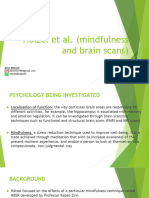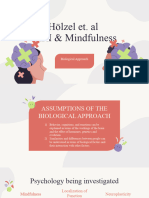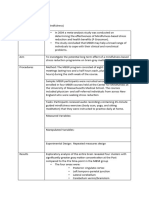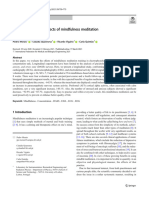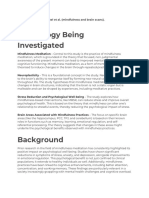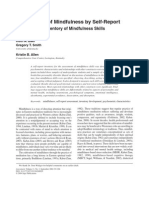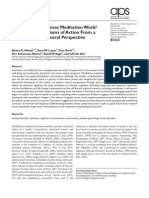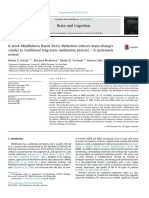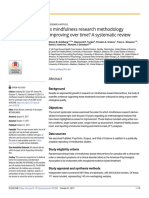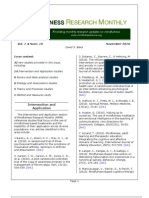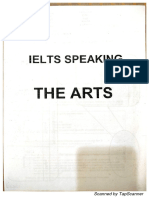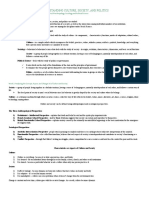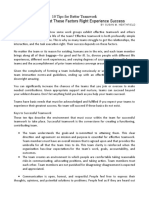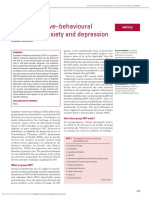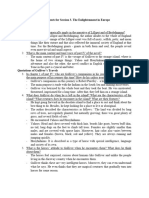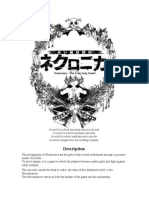Key Study Summary
Study Author: Holzel et al Year: 2011 Title: Mindfulness and brain scans
Background context / previous research for the study:
Mindfulness involves thinking and sensations and this information is processed by the brain. The goal of mindfulness is to wake up inner workings of
emotional, mental, and physical processes through meditation.Mindfulness techniques can be used to deal with stress and anxiety. Also, it can be used
to cope with eationg disorder, depression, pain and so on.
Aims / hypotheses / research question:
Aim: The aim of this study is to investigate the changes in specific brain regions and whole brain, by comparing grey matter density before
and after a mindfulness course.
Version 1
� Research method (underline): Experiment / Observation / Self-report / Correlation / Longitudinal / Case-study
What makes it that method?
Strengths of the method as used in the studyWeaknesses of the method as used in the studyFollowing participants overtime -> any changes can
be detected due to the IV, not the differences between participants variables. Small sample-> not representative.
Sample details: The participants who are enrolled in a MBSR course, have limited experience with meditation in their life, are physically and
For experiments:
psychologically healthy, were safe to use an MRI scan (no metal implants/ claustrophobia).
Experimental Design (underline): Independent measures / Repeated measures / Matched pairs
experimentalcontrol18 -> 16 (10 female and 6 male)17 (10 females and 10 maleMean age: 38 years (sd: 4.1)Mean age: 39 (sd: 9.2)13 Caucasian, 1
What makes it that design?
Asian, 1 African American, 1 multi ethics13 Caucasian, 2 Asian, 2 afircan american, 1 Hispanics Both group have the same eligibility criteria for
Strengths of the method as used in the studyWeaknesses of the method as used in the study
admission to the mindfulness course. All right handed
IV (Independent Variable): How was it manipulated / what are the different conditions of the experiment?
Sampling method (underline): Volunteer a.k.a Self-selected / Opportunity / Random
Exposure to 8 week mindfulness-based intervention, the MBSR course. MBSR group and controlled group.
How were they gathered using this method?
DV (Dependent Variable): How was the DV measured?
Change in grey matter density using MRI
Controls:
Version 1
� Findings / results
Procedure details (include tests used, equipment, materials, apparatus):
Type of Data Collected: Quantitative / Qualitative
Findings / results:
What makes it that data type?
Strengths of this data typeWeaknesses of this data type
Conclusions / explanations of results:
Methodological Issues
Validity: Is there something getting in the way of measuring what
Reliability: Is the study replicable? How consistent is the measure?
they wanted to measure eg extraneous variables, demand
Does it have a standardised procedure?
characteristics?
Version 1
�Evaluation Issues
Ethics: Were any ethical guidelines broken / how were they maintained?
Deception, confidentiality, harm, debrief, withdrawal and consent
Version 1
� Other evaluations relevant to the study (Debate): Pick the key evaluations for this study and comment on how they are an issue e.g. how the
study might be reductionist. Remember to try and offer balanced evaluations (such as how it is both high and low in Ecological Validity).
Ethnocentrism
Nature vs nurture
Ecological validity
Socially sensitive research
Individual/situational
Version 1










